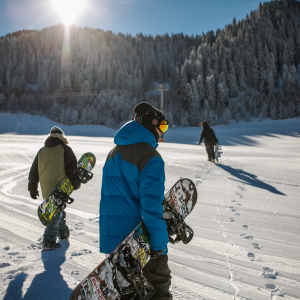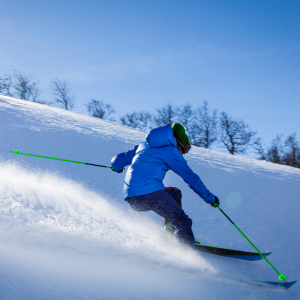Common Winter Sports Injuries and How to Prevent Them
 With the 2022 Winter Olympic Games starting up, millions of Americans will witness spectacular feats of athletic prowess. From snowboarder Shaun White sailing twenty feet in the air to the figure-skaters gracefully floating around the rink, there will be no shortage of sensational athletic feats. These remarkable events may inspire some of us to take up a winter sport. But without proper preparation, starting or returning to a winter sport may increase the risk of winter sports injuries.
With the 2022 Winter Olympic Games starting up, millions of Americans will witness spectacular feats of athletic prowess. From snowboarder Shaun White sailing twenty feet in the air to the figure-skaters gracefully floating around the rink, there will be no shortage of sensational athletic feats. These remarkable events may inspire some of us to take up a winter sport. But without proper preparation, starting or returning to a winter sport may increase the risk of winter sports injuries.
The Orthopaedic Hospital of Wisconsin is here to help prepare you for any athletic endeavor. Below, Calvin Thomas, PT, DPT, OCS, of OHOW’s Cedarburg Physical Therapy clinic describes common winter sports injuries and outlines how to reduce your risk of injury.
Common Winter Sports Injuries
 Concussion
Concussion
A concussion is a mild brain injury from a direct blow to the head. This may occur from a fall while skiing, ice skating, or snowmobiling. Common signs of a concussion include dizziness, headache, confusion, and slurred speech. More serious consequences include vomiting, amnesia, and loss of consciousness. There may also be injuries to the jaw or neck. Symptoms can come on right away or hours after the injury. Be sure to seek urgent medical care for any head trauma to screen for serious injury.
Knee Sprains
The knee plays a vital role in many winter sports. Knees absorb the shock of landing from a ski jump to help you lift and place your next step while snowshoeing. Injuries to knee ligaments can occur when twisting the knee or landing from a jump.
 Dislocated Shoulder/AC Joint Injury
Dislocated Shoulder/AC Joint Injury
High-speed winter sports such as skiing, snowboarding, and snowmobiling may result in shoulder dislocations or acromioclavicular (AC) joint sprains. A dislocation may result from a fall or blow to the shoulder, especially when falling on an outstretched arm. An AC joint sprain will often occur when falling directly onto the side or top of the shoulder. You should seek urgent medical care if there is visible deformity or you are unable to move your arm after a fall.
Skier’s Thumb
Skier’s thumb is a hand injury so common to the sport that it’s become part of its moniker. A Skier’s Thumb injury can occur when falling onto an outstretched hand while holding a ski pole and the pole forces the thumb away from the hand. This can injure a ligament on the inside of the thumb.
How To Reduce Your Risk of Winter Sports Injuries
Warm-up
The simple act of warming up by stretching and moving before your winter activity will prepare your body for movement. Warming up is especially important in cold weather. Performing a series of progressively higher speed and amplitude exercises before exerting yourself will prime your muscles and tendons for action, making you less likely to get injured.
Protective Equipment
Investing in high-quality protective equipment is an essential method of injury prevention. For example, the most effective way of reducing your chance of sustaining a concussion is wearing a proper-fitting helmet. Injuries happen because of old, worn-out, or improperly fitting equipment. Check your equipment before heading out and wear appropriate gear for the activity, whether that means gloves, helmets, knee pads, or other protective apparel.
Proper Technique
Using the proper technique when participating in winter sports will reduce your chance of injury. Be sure that you’ve had proper coaching or instruction when beginning a winter sport.
Know Your Limits
Your chance of injury increases as your body fatigues and muscles become less responsive and less capable of making the necessary adjustments. Listen to your body and have a realistic view of your capabilities.
Learn How to Fall
If a fall is inevitable, there are a few things you can do to reduce your chance of injury. Practice falling safely before a real fall occurs. Try to roll with the fall. Rolling to the ground will help to dissipate the hard jolts of a direct impact. Relaxing your muscles as you hit the ground will also help dissipate the forces of impact. Be sure to drop anything you may be carrying as you fall to avoid landing on it.
If you have questions about how you can prepare yourself for winter sports or need treatment for a winter sports injury that you’ve sustained, do not hesitate to reach out to the physical therapists at the Orthopaedic Hospital of Wisconsin Physical Therapy clinics. Call or go online to set up a free consultation today.

